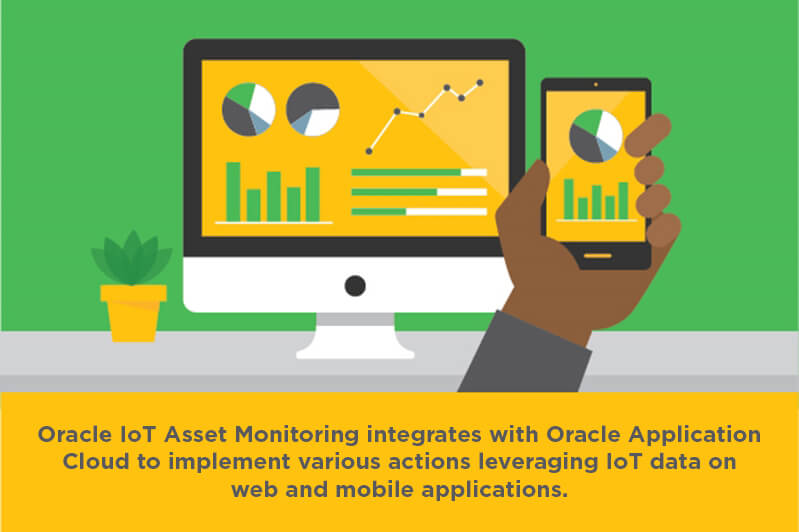The supply chain involves a wide variety of machines and devices. As more objects become internet-enabled, organizations are looking to ensure these devices can communicate with each other and provide unprecedented visibility across supply chain operations. The data collected by these devices through the Oracle IoT Cloud can be integrated with R13 SCM Cloud and positively impact a variety of supply chain processes. Let’s look a little closer at some of these new features:
1. Integration with other cloud services
It’s important for solutions to work seamlessly together to ensure visibility over all supply chain processes. Oracle R13 SCM Cloud is an integrated product which embeds best of class supply chain processes and can be integrated with various non Oracle SCM products to manage a process end to end in a hybrid environment. IoT Cloud adds another level of sophistication on these integrated processes – it increases the flexibility and responsiveness of the processes. As an example, enabling the IoT solution to provide real time data on equipment health and integrating with Oracle Maintenance Cloud and Service Cloud provides a better way to service and maintain the equipment and increases its availability. In a heterogeneous environment, using integrations, users can export incidents and import work orders as well as view necessary information about equipment and devices on a real time. As more devices are added to supply chain operations, these capabilities will be invaluable.
 Oracle IoT cloud integrates well with other Oracle environments.
Oracle IoT cloud integrates well with other Oracle environments.
2. RFID tag and reader support
Transporting goods and maintaining inventory is a challenging art to master. Businesses must be able to easily find items within their own warehouse as well as track them during delivery. Oracle R13 SCM cloud connects RFID readers and Oracle IoT Cloud Service network, ensuring that workers can report the location of an RFID-tagged asset that’s in the proximity of a reader. This will make it much simpler to verify that organizations are tracking inventory appropriately and that they’ve received as much material as they expected.
3. Leverage IoT data
The biggest promise of IoT comes from the sheer amount of data that the devices generate. Organizations can use this information to make critical decisions and improve workflows. Oracle IoT Asset Monitoring integrates with Oracle Application Cloud to implement various actions leveraging IoT data on web and mobile applications.Leaders should use the key performance indicator attributes within their cloud environments to monitor and manage key assets for optimal performance and reduced downtime. These capabilities will go a long way toward identifying abnormalities and predicting emerging trends.
The Internet of Things is no longer a figure on the horizon, but one that is increasingly growing with the advancement of connected objects. Manufacturing shops and other businesses must implement tools to ensure that these devices can communicate effectively with each other. This will result in comprehensive data regarding overall operations and provide visibility throughout the supply chain. Inspirage has experience deploying these and other ERP and SCM solutions. Visit our Digital/IoT page to learn more about how to begin your Digital Transformation and download our R13 IoT infographic for more key features in this release. For more information, contact Inspirage today for a consultation.
